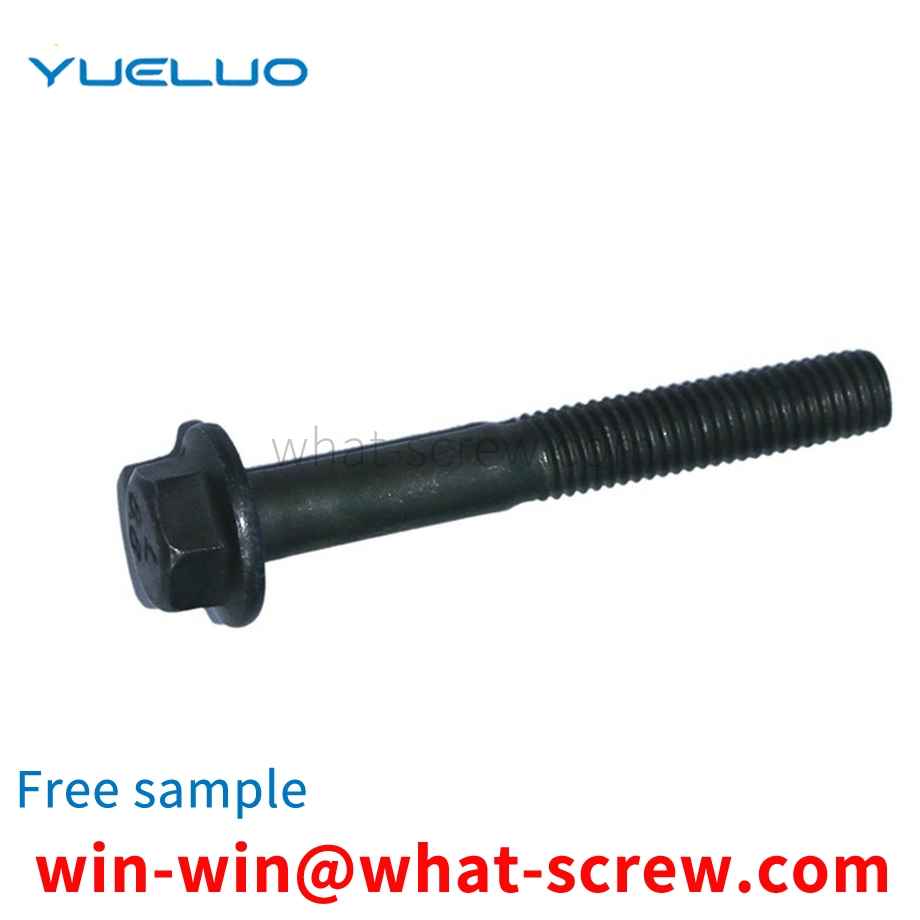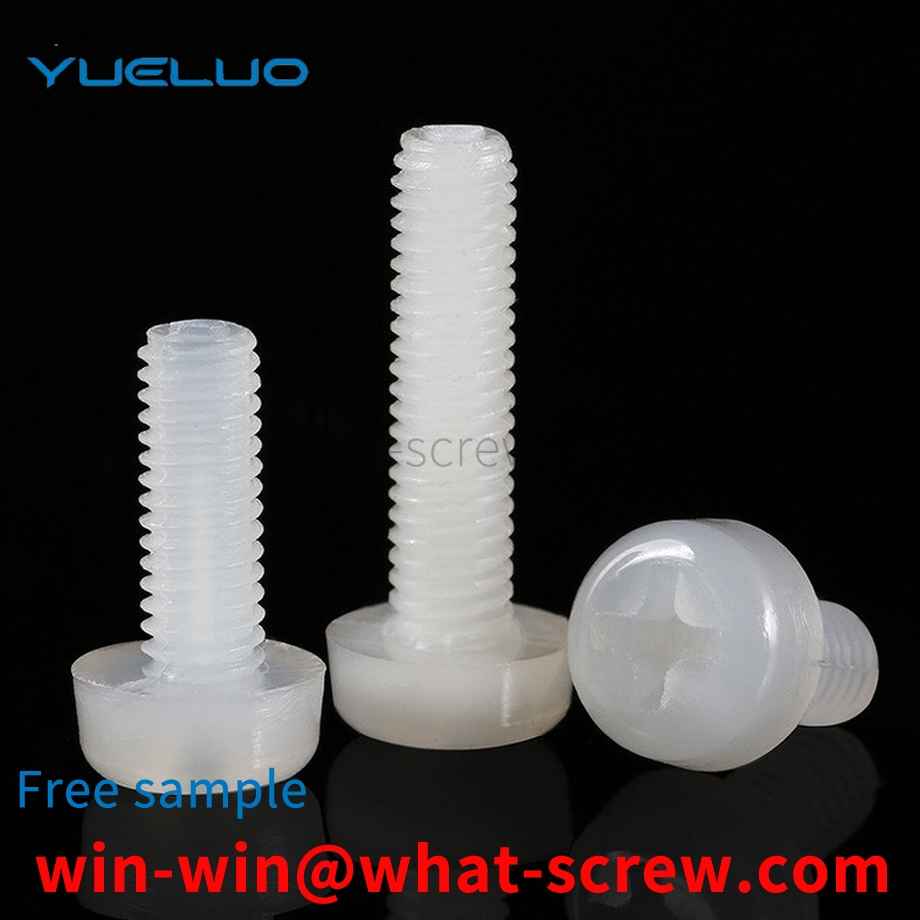1. First remove the sludge on the surface of the broken head of the broken screw, use the center gun to kill the center gun of the section, and then use an electric drill to install a drill bit with a diameter of 6-8 mm to drill the hole in the center of the section, pay attention to the hole must be drilled through. After the hole is drilled through, remove the small drill bit and replace it with a drill bit with a diameter of 16 mm, and continue to expand and drill through the hole of the broken bolt. 2. Take a welding rod with a diameter of less than 3.2 mm and use a medium and small current to carry out surfacing welding from the inside to the outside in the hole of the broken bolt. Take half of the entire length of the broken bolt at the beginning of the surfacing welding. When starting the surfacing welding, the arc should not be too long. In order to avoid burning through the outer wall of the broken bolt, surfacing to the upper end face of the broken bolt, and then continue surfacing to weld a cylinder with a diameter of 14-16 mm and a height of 8-10 mm. 3. After the surfacing is completed, hammer the end face with a hammer to make the broken bolt vibrate along its axial direction. Due to the heat generated by the previous arc and the subsequent cooling plus the vibration at this time, the broken bolt and the thread of the body will be loose in between. 4. Carefully observe, when it is found that a small amount of rust leaks from the fracture after the knock, take the M18 nut and put it on the surfacing column head and weld the two together. 5. After welding, use a torx wrench to cover the nut while it is still hot, and twist it back and forth, or tap the end face of the nut with a small hand hammer while twisting back and forth, so that the broken bolt can be taken out. 6. After taking out the broken bolt, use a suitable tap to process the thread in the frame to remove rust and other debris in the hole.
Yueluo relates to a self-tapping screw according to the preamble of claim 1. A self-tapping screw is known from EP0623759B1, the ratio of the outer diameter to the smaller diameter of the self-tapping screw is about 1.25-1.5, the ratio of the outer diameter to the pitch lead is about 1.5-1.6 and the thread The flank angles of , are < 50° and ≥ 35°. EP0433484B1 proposes a self-tapping screw whose thread is provided with cutting teeth of approximately arcuate design, and the cutting edge and the thread crest are at the same horizontal position and are set in opposite directions. One purpose of Yueluo is to realize a general type of self-tapping screw so that it can be screwed particularly easily into holes drilled in concrete or other materials such as bricks and the like. According to Yueluo, this object is achieved by the features in the characterizing part of claim 1, and surprisingly, it has been found that the parallel arrangement of the flanks, ie with a flank angle of about 0°, will make screwing particularly easy when screwing in , especially if the diameter of the hole varies within an allowable tolerance. One reason may be due to the fact that there is no lateral pressure on the material screwed into the thread, even if threads of different depths are cut in concrete or other materials such as brick, chipped plywood, or hardwood. The thread cuts into the material over its entire width by cutting grooves. In particular according to the embodiment of claim 11 the result is that the material cut out when screwing in the screw can be discharged without any accumulation, the dependent claims reflecting many advantages of further embodiments.
Nuts are used as fasteners, and most of them need to be used in conjunction with gaskets in the process of use to adjust the deficiencies of the material itself and strengthen the degree of tightening, while metal materials are used as raw materials for gaskets. The cost is also relatively high, and in the process of use, the end face of the metal gasket and the nut will also be affected by the process, resulting in the defect that the fastening effect is not firm and easy to loosen.
The fixing screw proposed by Guangdong Yueluo Hardware Industry Co., Ltd. has a screw body 1, and the axial surface of the screw body 1 is formed with extending screw teeth 6, and the axial surface is a column along the central axis direction of the cylinder of the screw body 1. The body surface has a hemispherical screw tail 7 at the bottom, and a screw head 2 at the top. The upper surface of the screw head 2 is provided with a slot (not shown). The screw body 1 is composed of the upper tapered rod 4 and the lower cylindrical screw 5. The tapered rod 4 is an inverted cone, the diameter of its circular upper surface and the diameter of the screw mounting hole 10. equal. The fixing screw also has a washer 3, the washer 3 is arranged between the screw head 2 and the screw body 1, the lower surface of the cylindrical washer 3 has a number of teeth 8, the teeth 8 are along the The upper surface of the inverted cone of the tapered rod 4 and the edge of the washer 3 are connected to form a straight convex strip 15 extending outward; the convex strip 15 can also be designed in an arc shape. The fixing screws for installation proposed by Guangdong Yueluo Hardware Industry Co., Ltd. can be made of metal materials in one piece. As shown in Figure 3, it is a schematic diagram of the installation of Guangdong Yueluo Hardware Industry Co., Ltd. for PCB board fixing. When installing, first pass the screw body 1 of the fixing screw through the mounting hole 10 and the copper column 11 provided on the PCB board 9, so that the tail 7 of the screw reaches the mounting hole 13 on the casing 12, and then use the tightening tool 14 to insert the screw At the notch on the top of the head, forcefully press the inverted cone design taper rod 4 of the screw body 1 into the mounting hole 10, so that the tail 7 passes through the mounting hole 13. Due to the outer diameter D at the bottom of the taper rod and the screw mounting hole The aperture size of 10 is equal, and the fixing screws are pressed and fixed, so that the PCB board 9 can be automatically corrected in the process of fixing its front, back, left and right deflections, and the accuracy of the installation position of the PCB board 9 can be ensured. As shown in Figure 4, after the fixing screw is screwed into the casing, the washer 3 is fully contacted and pressed on the PCB board 9, and the PCB board 9, the copper column 11 and the casing 12 are firmly connected together without sliding. . The teeth 8 on the washer 3 are in full contact with the surface of the PCB board 9, so that a ground wire path is set up between the PCB board 9 and the casing 13 by the metal fixing screw 1, thereby ensuring that the PCB board 9 is fully grounded , the design of the teeth 10 on the washer 3 also has a non-slip function. The fixing screws for installation designed by Guangdong Yueluo Hardware Industry Co., Ltd. make use of the cooperation, friction and electrical conductivity in the mechanical connection, which fully guarantees the firm installation of the PCB board and the chassis and the good grounding of the PCB board. Moreover, the ellipsoid tail of the fixing screw The surface is relatively smooth, even if the mounting holes are exposed, it will not cause scratches on the hands and desktop. The above is only the embodiment of Guangdong Yueluo Hardware Industry Co., Ltd., and does not limit the scope of Guangdong Yueluo Hardware Industry Co., Ltd., any equivalent structure made by using the contents of the description and drawings of Guangdong Yueluo Hardware Industry Co., Ltd. or etc. Effective process transformation, or direct or indirect application in other related technical fields, are also included in the protection scope of Guangdong Yueluo Hardware Industry Co., Ltd.
Stud bolts generally need to be surface treated. There are many types of bolt surface treatments. Generally, electroplating, blackening, oxidation, phosphating, and electroless zinc flake coating are commonly used. However, electroplated fasteners account for a large proportion of the actual use of fasteners. Especially in automobiles, tractors, home appliances, instrumentation, aerospace, communications and other industries and fields are more widely used. However, for threaded fasteners, not only a certain anti-corrosion capability is required in use, but also the interchangeability of threads must be ensured, which can also be called screwability here. In order to meet the dual-use performance of anti-corrosion and interchangeability required by threaded fasteners in use, it is very necessary to formulate special plating standards. GB/T5267.1-2002 [Threaded fastener electroplating layer] standard is one of the national standards fastener surface treatment series of standards, the standard includes: GB/T5267.1-2002 [fastener electroplating layer]; GB/T5267.2-2002 [Electrolytic zinc flake coating for fasteners] Two standards. This standard is equivalent to the international standard ISO4042; 1999 [Threaded fastener electroplating layer]. This standard replaces the GB/T5267-1985 [Threaded Fastener Electroplating Coating] standard.
We have many years of experience in the production and sales of screws, nuts, flat washers, etc. The main products are: carbon galvanized screws, copper rivets, U-shaped screws and U-shaped screws, hexagonal combination set screws and other products, we can provide you with suitable products. Your fastener solution.



















 Service Hotline
Service Hotline




